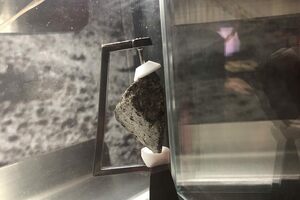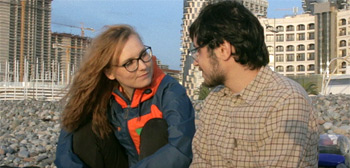Great Scott Moon Rock in Hartford, Connecticut

Located next to a replica Apollo 11 suit in the Space gallery of the Connecticut Science Center is a small, humble-looking stone encased in a thick acrylic case. While it may look like any other rock found in a backyard, this particular rock is a small piece of “Great Scott,” a large lunar sample collected by the crew of Apollo 15 in 1971. The sample was named after the mission’s commander, David Scott.
The chunk of “Great Scott” owned by the Connecticut Science Center is composed of basalt, a common mineral found on Earth and the moon. “Great Scott,” however, is much older than any Earthly basalts. It formed approximately 3.3 billion years ago when the moon was still very young. Rocks on Earth are rarely this old because erosion and plate tectonics constantly break down and reform them. The moon, however, has no tectonics, wind, or water to erode its surface. The only alterations come from meteor strikes.
As a result, many lunar rocks have existed in their current state almost since the moon’s formation. Studying rocks like “Great Scott” helps researchers learn more about the early solar system, along with the formation of the Earth and its satellite.





